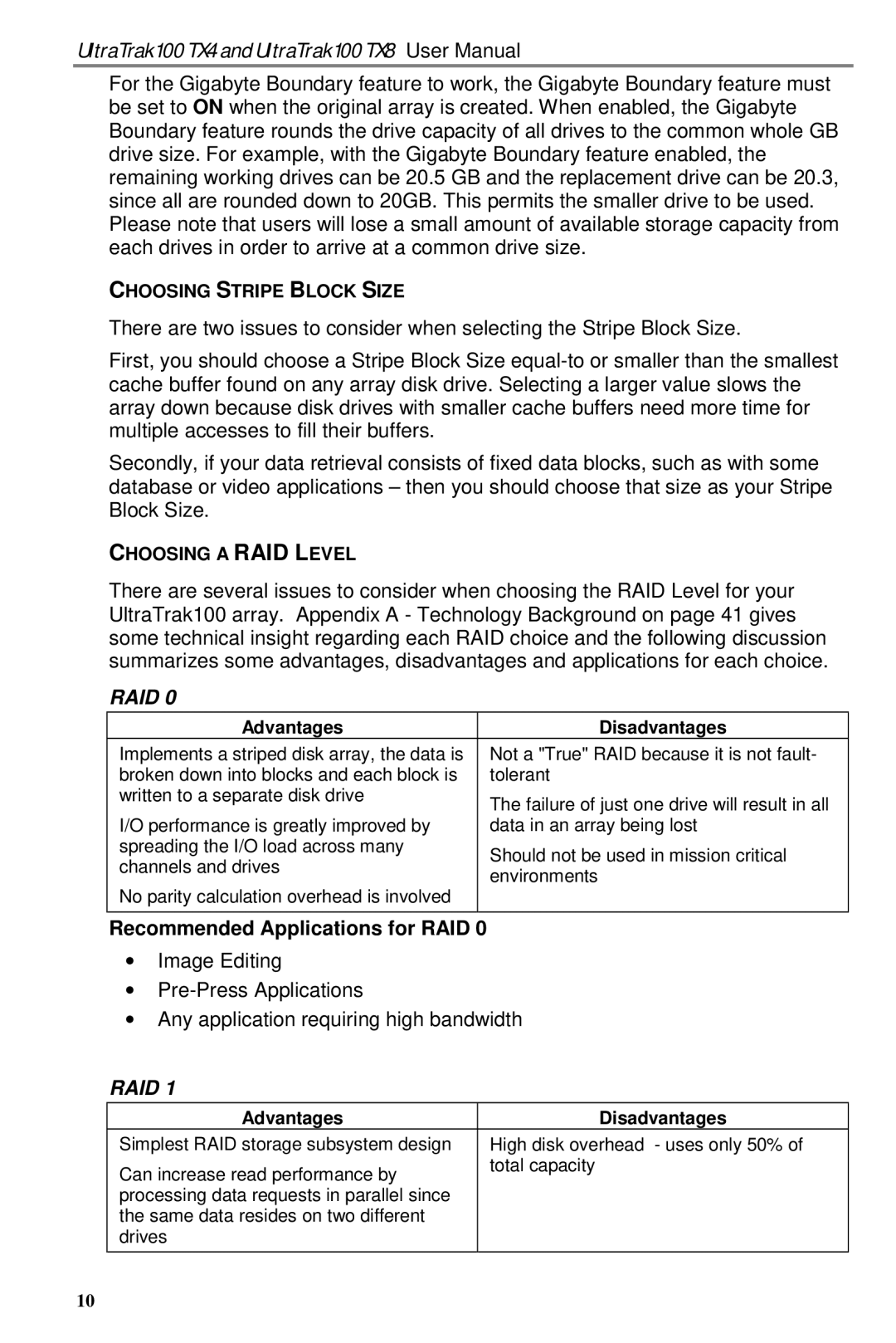UltraTrak100 TX4 and UltraTrak100 TX8 User Manual
For the Gigabyte Boundary feature to work, the Gigabyte Boundary feature must be set to ON when the original array is created. When enabled, the Gigabyte Boundary feature rounds the drive capacity of all drives to the common whole GB drive size. For example, with the Gigabyte Boundary feature enabled, the remaining working drives can be 20.5 GB and the replacement drive can be 20.3, since all are rounded down to 20GB. This permits the smaller drive to be used. Please note that users will lose a small amount of available storage capacity from each drives in order to arrive at a common drive size.
CHOOSING STRIPE BLOCK SIZE
There are two issues to consider when selecting the Stripe Block Size.
First, you should choose a Stripe Block Size
Secondly, if your data retrieval consists of fixed data blocks, such as with some database or video applications – then you should choose that size as your Stripe Block Size.
CHOOSING A RAID LEVEL
There are several issues to consider when choosing the RAID Level for your UltraTrak100 array. Appendix A - Technology Background on page 41 gives some technical insight regarding each RAID choice and the following discussion summarizes some advantages, disadvantages and applications for each choice.
RAID 0
Advantages | Disadvantages | |
Implements a striped disk array, the data is | Not a "True" RAID because it is not fault- | |
broken down into blocks and each block is | tolerant | |
written to a separate disk drive | The failure of just one drive will result in all | |
| ||
I/O performance is greatly improved by | data in an array being lost | |
spreading the I/O load across many | Should not be used in mission critical | |
channels and drives | ||
environments | ||
No parity calculation overhead is involved | ||
| ||
|
|
Recommended Applications for RAID 0
•Image Editing
•
•Any application requiring high bandwidth
RAID 1
Advantages | Disadvantages |
Simplest RAID storage subsystem design | High disk overhead - uses only 50% of |
Can increase read performance by | total capacity |
| |
processing data requests in parallel since |
|
the same data resides on two different |
|
drives |
|
10
